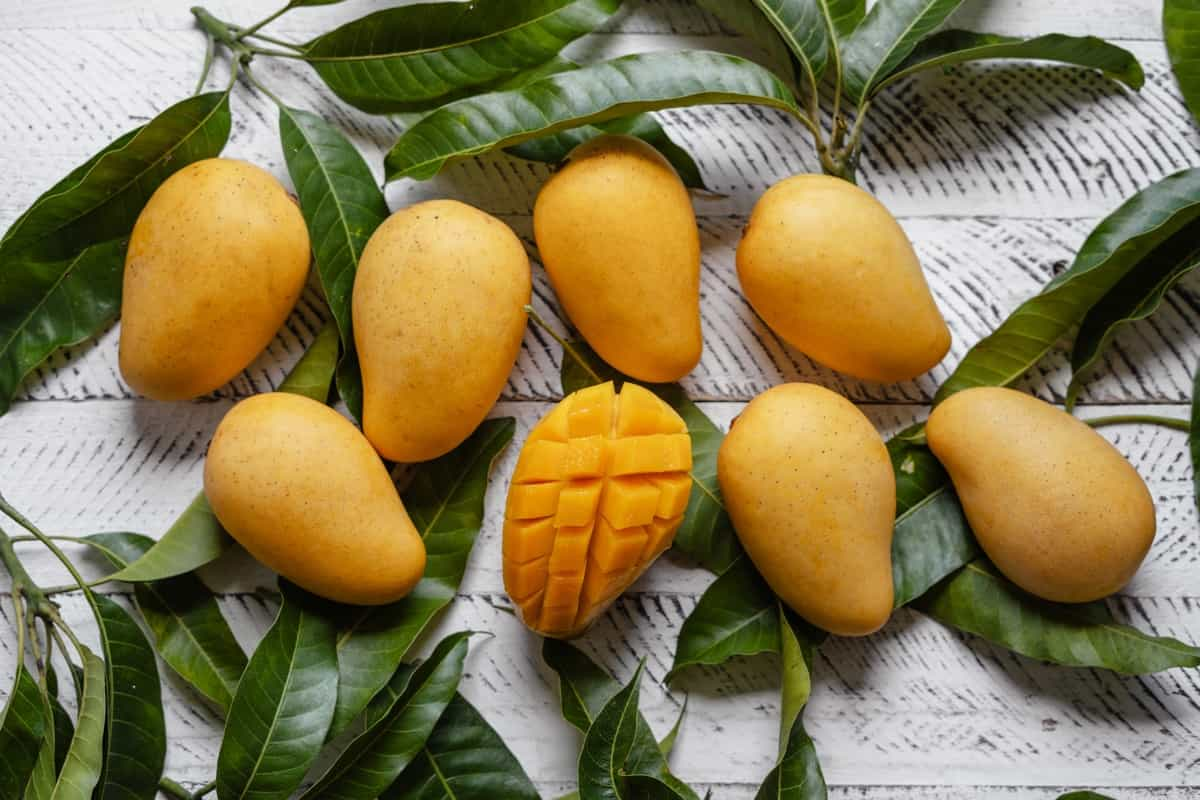Successful Mango farming requires careful attention to fruit size management throughout different stages of cultivation – from planting to harvesting. By implementing effective practices like pruning, thinning, and fertilization strategies tailored to specific cultivars or varieties – growers can achieve larger-sized Mangoes that not only meet consumer preferences but also maximize profits.

How to Get Bigger Mango Fruits
Optimizing Soil Nutrients for Larger Mango Fruits
When it comes to growing Mangoes, one of the key factors that can greatly impact fruit size is the optimization of soil nutrients. Providing your Mango trees with the right balance of essential nutrients is crucial for ensuring healthy growth and maximizing fruit production. Mango trees have specific nutrient requirements throughout their growth stages.
During flowering and fruiting periods, they need enough phosphorus and potassium to support flower formation, fruit set, and enlargement. Nitrogen should be provided in moderation, as higher nitrogen can increase vegetative growth at the expense of fruiting. Organic matter improves soil fertility and moisture retention.
Maximizing Sunlight Exposure for Bigger and Better Mango Fruits
Sunlight is the key factor in determining the size and quality of Mango fruits. Ensure that your Mango trees are planted in an open area with minimal shading from nearby structures or other tall trees. This will allow maximum sunlight to reach the leaves and, ultimately, the fruits. Regular pruning of the Mango tree canopy can help optimize sunlight penetration.
Thinning out the canopy allows better air circulation as well, reducing humidity levels that can lead to fungal diseases. Additionally, consider using reflective materials such as white plastic mulch or aluminum foil around the base of each tree. These reflectors help redirect sunlight towards lower branches and increase overall light intensity within the canopy.
The Role of Pruning in Increasing Mango Fruit Size
Pruning plays a crucial role in maximizing the size and quality of Mango fruits. When it comes to pruning Mango trees, timing is key. It’s best to prune when the tree is not actively growing. This allows for better healing and minimizes stress on the tree. One important aspect of pruning is removing dead or diseased branches.
Another technique used in Mango pruning is thinning out excessive branches. This helps improve air circulation within the canopy, reducing disease incidence and allowing sunlight to penetrate deeper into the tree. By strategically pruning overcrowded areas, you also promote proper light distribution among fruit-bearing branches. Improved exposure to sunlight results in enhanced photosynthesis, which directly contributes to bigger fruit development.
In case you missed it: How to Grow Mangosteen Fruit from Seed to Harvest: Check How this Guide Helps Beginners

Irrigation Techniques for Larger Mango Fruits
Irrigation plays a crucial role in the growth and development of Mango trees, ultimately impacting the size and quality of their fruits. Adequate water supply is essential for optimal fruit production, but it’s important to strike a balance. Too little water can lead to stunted fruit growth, while excessive watering can result in poor flavor and texture. One effective technique for irrigation is drip irrigation. Drip irrigation not only conserves water by reducing evaporation and runoff but also ensures that each tree receives a consistent supply of moisture.
Monitoring soil moisture levels is crucial in determining when and how much to irrigate. Using a moisture meter or conducting regular visual inspections can provide valuable insights into whether your trees are receiving adequate hydration. It’s important to note that during certain stages of Mango fruit development, like flowering or fruit set, additional watering may be required due to increased nutrient demand.
Fertilizer Application for Bigger Mango Fruits
When it comes to growing bigger and better Mango fruits, fertilizer application plays a crucial role. By providing your Mango trees with the right nutrients, you can enhance their growth and development, resulting in larger and juicier fruits. One important aspect of fertilizer application is choosing the right type of fertilizer. Mango trees require a balanced blend of nitrogen, phosphorus, and potassium (NPK) for optimal fruit production.
Timing is also key when applying fertilizers. It’s recommended to divide the total amount of fertilizer into multiple applications throughout the year rather than applying it all at once. Applying excess fertilizer can be detrimental as well. In addition to traditional granular fertilizers, consider using organic options such as compost or manure.
Mango Fruit Thinning: When, How, and Why to Thin Fruits for Optimal Growth
When it comes to growing Mangoes, one important technique that can significantly impact fruit size is fruit thinning. Ideally, thinning should be done when the fruits are still small and immature. It’s best to wait until they have reached about 1 inch in diameter before making any decisions on which ones to remove. Thinning can be done using various methods depending on personal preference or specific circumstances.
Some growers choose to simply pluck off excess fruits by hand, while others may use pruning shears or scissors for a cleaner cut. Whichever method you choose, remember not to damage the surrounding branches or leave stubs behind. By reducing the number of fruits competing for nutrients and resources on each branch, you’re allowing those remaining fruits to receive a greater share of these essential elements. This results in larger-sized Mangoes with better quality overall.
Monitoring and Controlling Pests and Diseases for Larger Mango Fruits
Pests and diseases can damage your Mango orchard, affecting not only the overall health of your trees but also the size and quality of your fruits. It is crucial to monitor and control these issues to ensure you get larger Mango fruits. Look out for common culprits such as aphids, fruit flies, or fungal infections like powdery mildew. Implement proactive measures to control the pests.
In case you missed it: Growing Mangoes from Seed to Harvest: A Detailed Planting/Production Guide for Beginners

This can include using neem oil sprays or introducing beneficial insects like ladybugs that feed on harmful pests. Maintain good orchard hygiene by removing fallen leaves and debris regularly. Cleaning up around the base of the tree reduces hiding places for pests and minimizes disease transmission. Practicing proper irrigation techniques can also minimize pest problems by avoiding excess moisture that attracts certain insects and promotes fungal growth.
Harvesting Mango Fruits at the Right Time: The Importance of Timing for Maximizing Fruit Size and Quality
Harvesting Mango fruits at the right time is crucial for maximizing their size and quality. Timing plays a key role in ensuring that you get the juiciest, most flavorful Mangoes from your orchard. One indicator of ripeness is color – when the green skin starts turning yellow or orange, it’s usually a sign that the fruit is ready to be harvested.
Another way to determine if a Mango is ripe is by gently squeezing it. A ripe Mango will yield slightly to pressure but should not feel overly soft or mushy. It should also have a sweet fragrance emanating from its stem end. If you wait too long, the Mango may become overripe and lose some of its sweetness and firmness. On the other hand, harvesting too early can result in underripe fruits with less developed flavors.
Temperature Management for Bigger Mango Fruits
Temperature management plays a crucial role in achieving bigger Mango fruits in your orchard. Mango trees thrive in warm, tropical climates, but extreme temperatures can negatively impact fruit development. To ensure optimal fruit size, it is important to manage temperature fluctuations throughout the growing season. During flowering and fruit set, maintaining a moderate temperature range of around 21-29°C is ideal.
High temperatures above 35°C can lead to poor pollination and reduced fruit set. In contrast, temperatures below 13°C can cause flower drop and hinder fruit development. To regulate temperature, consider using shading techniques such as installing shade nets or providing temporary coverings during peak heat periods. This helps protect the Mango tree from excessive sun exposure and prevents heat stress on the developing fruits.
Mango Tree Maintenance and Training for Increased Fruit Size
- Regular pruning: Remove any dead or diseased branches, as well as those that may be crossing or rubbing against each other.
- Thinning out excess fruits: If your tree has too many young Mangoes, it’s important to thin them out to allow the remaining fruits sufficient nutrients to grow larger. This can be done when they reach about one inch in diameter by gently plucking away a portion of the small fruits.
- Proper spacing: Ensure that your Mango trees have enough space between them for adequate sunlight penetration and air circulation. This will promote better overall growth and development of the fruit.
- Mulching: Apply organic mulch around the Mango tree to conserve moisture, suppress weed growth, and provide essential nutrients over time.
- Pest control measures: Regularly monitor your trees for signs of pests such as aphids or scale insects, which can hinder fruit development.
In case you missed it: How to Prepare the Soil for Mango Trees: Tips for Best Soil Mix, pH, and Compost

Conclusion
Increasing the size of your Mango fruits requires a combination of proper soil nutrient management, maximizing sunlight exposure, strategic pruning techniques, effective irrigation methods, appropriate fertilizer application, fruit thinning when necessary, monitoring and controlling pests and diseases, harvesting at the right time, temperature management, and tree maintenance.
By implementing these practices in your orchard or garden, you can optimize fruit size and quality. By following these guidelines and adapting them to suit your specific location and Mango variety characteristics, you will increase your chances of obtaining bigger and better Mango fruits.
- How to Grow Tomatoes Organically at Home: A Comprehensive Guide
- Organic Gardening on a Budget: Low-Cost Methods and Materials
- Gongura Seed Germination and Planting Methods
- Cabbage Seed Germination and Selection
- Broccoli Seed Germination and Selection
- Asparagus Seed Germination and Variety Selection
- Seasonal Flower Gardening: Best Practices for Spring, Summer, Fall, and Winter
- How to Grow Hibiscus from Flower
- Plantation Ideas for Home Decoration: A Beginners Guide